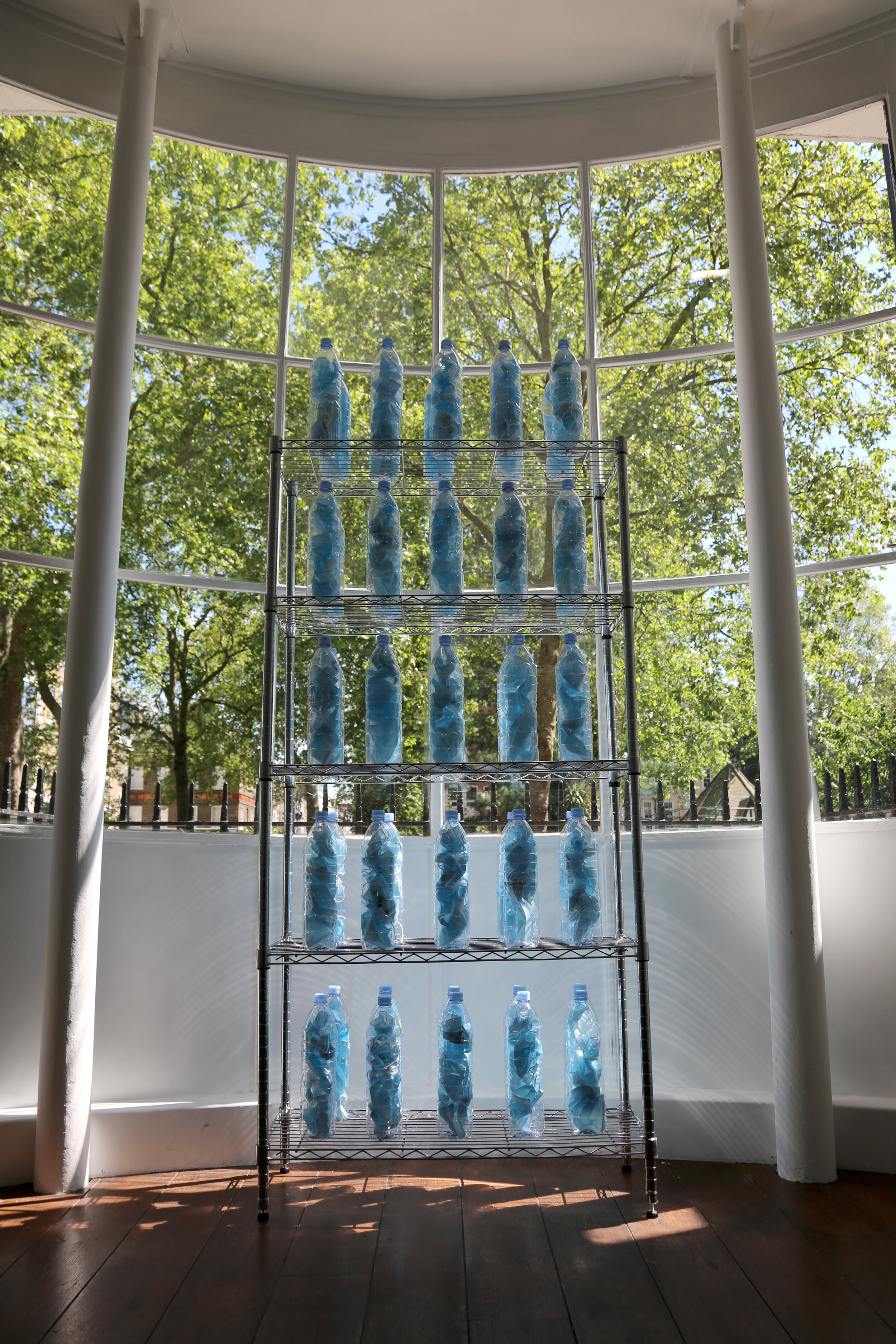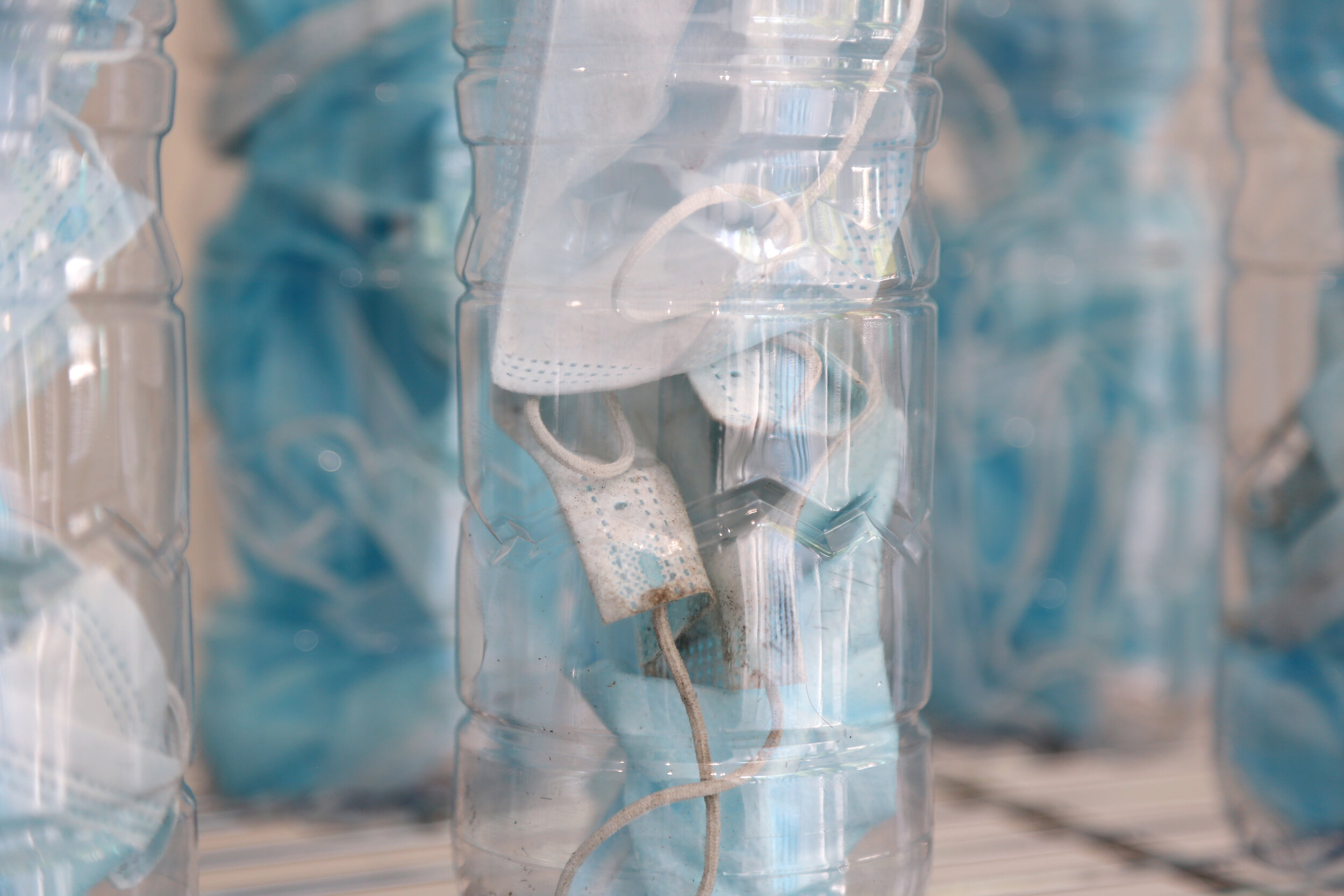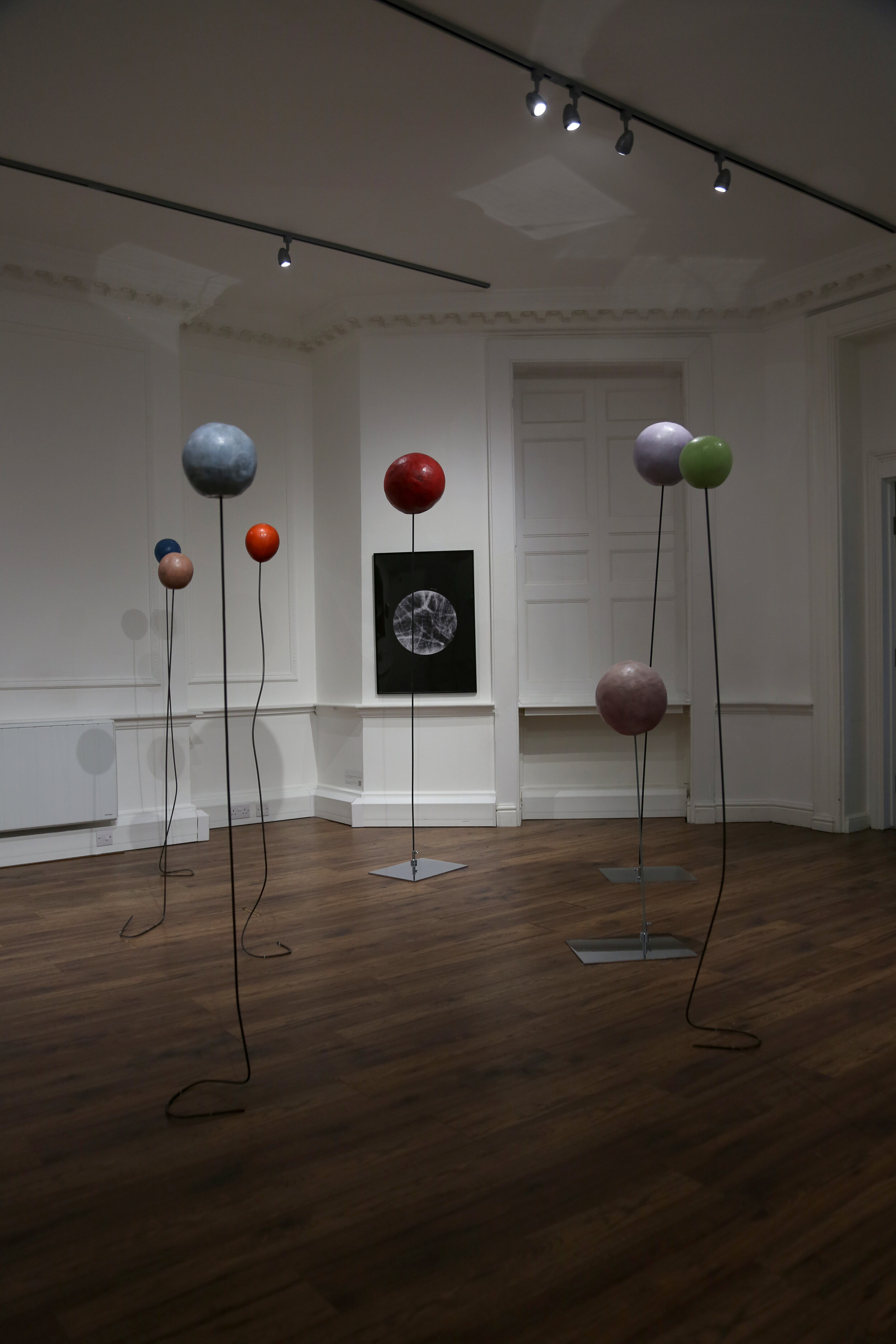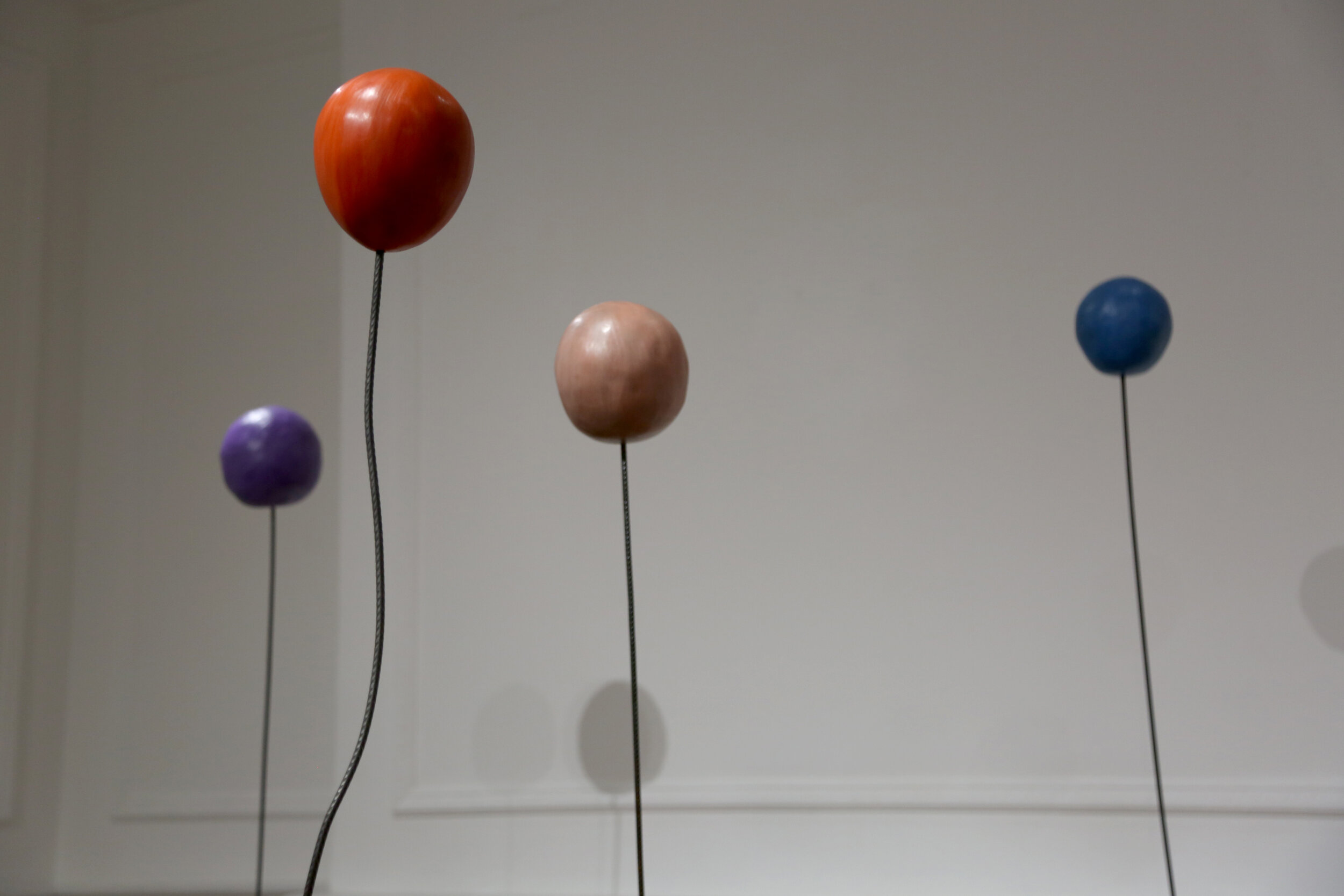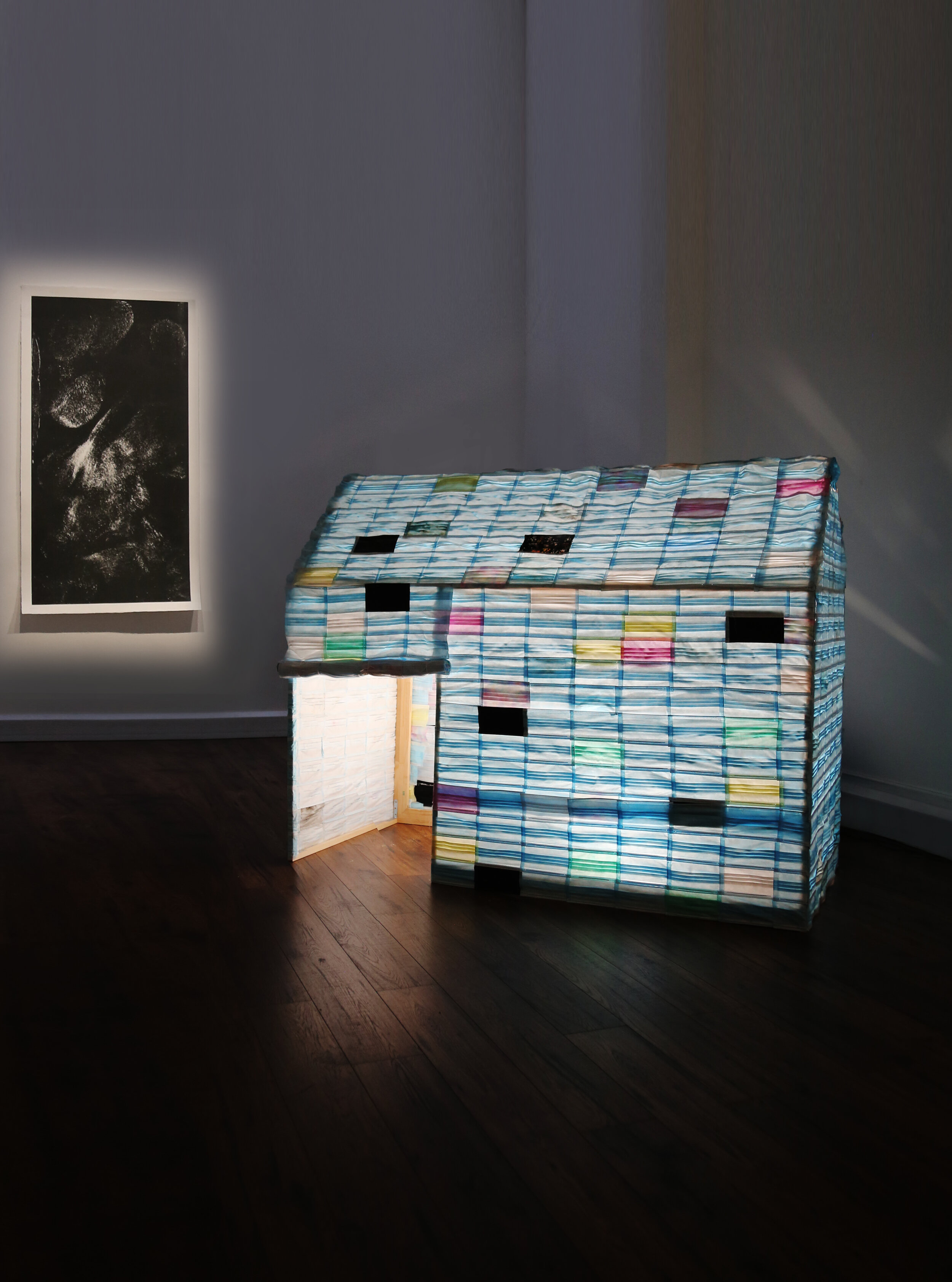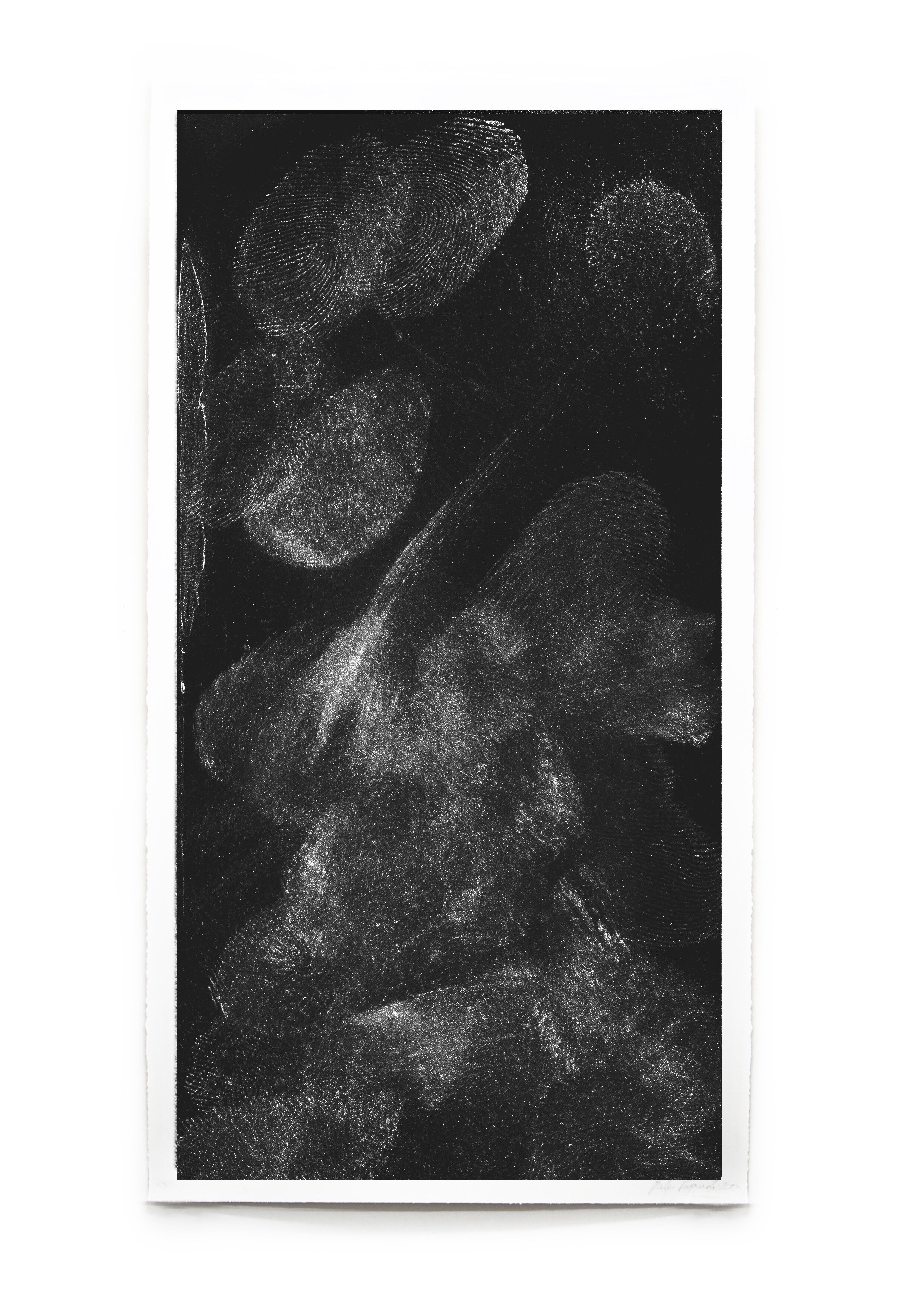Major Incident: Sustainability after Covid-19
Piotr Krzymowski, an emerging Polish artist who looks at post-pandemic pollution through his sarcastic, ironic, and humorous multi-media installations. By creating engaging stories throughout his exhibition, 'Major Incident', curated by Marta Marsicka, the artist explores the critical interdependence between sustainability and our responsibility towards health and planet. He brings and opens the public's eyes to a harsh reality that has to be faced during, and after, the Covid-19 crisis and its subsequent mass production of plastic personal protective equipment.
In a conversation with Cristina Ye, MADE IN BED's Agent of Change Editor, Piotr Krzymowski and Marta Marsicka revealed their concern about the increase of pollution and waste that the pandemic has brought.
Piotr is an emerging artist from Darłowo, in the north of Poland. His interest in art started at a very young age, but he has never seen it as a career or profession. Indeed, Piotr came from a fashion background, and as an ex-model and winner of a fashion competition in Poland, he has quite a lot of experience in the field. However, his dream of becoming a fashion designer faded away with time, leaving room for a new vision: being an artist. After his graduation, he was offered a choice of continuing his education at the Academy of Fine Arts in Warsaw or Central Saint Martins in London. He chose London for a change of scenery and an exciting experience, looking to expand his artistic horizons beyond his native Poland. His creativity and talent caught the attention of Bloomberg New Contemporaries' selectors (Liverpool Biennale and ICA) in 2012, the last year of his Bachelors degree in Fine Art, with his video work '73 and Boys'. Today, Piotr works between London and Warsaw, where he had moved with his family at the age of 12.
Marta Marsicka is a curator and art historian based in Birmingham. She works as a programme coordinator at Centrala, creating and implementing on and off-site events and exhibitions. Her interests and practice involve Central and Eastern European art, the history of political art, identity and representation issues. Marta's goal as an art practitioner is to question the status quo and make the British art scene as diverse as its society. As Piotr, Marta comes from a background unrelated to art; despite her interest in art, she studied literature. Only later had she decided to broaden her knowledge and pursue a degree in art history. As soon as she started, she connected with the topic and decided to dive deeper, which has led her to where she is now.
Although Piotr and Marta come from the same small town in the north of Poland, they met during the Covid-19 pandemic over Zoom. Back then, Marta was working on research project about the representation of Central and Eastern European artists in the UK, looking for artists that inspire her. She came across Piotr's work, which instantly caught her attention, and decided to contact him. A good friendship was born, they have stayed in contact since. Later, Piotr started to work on his project ‘Major Incident’ and asked Marta to embark on this journey with him as a curator for his exhibition at Project13.
'Major incident' is a project that Piotr developed during the pandemic where he reflected on pollution and the impact of human beings on the planet. For years, news, articles, and debates in the media have made people aware of the ecological disaster that is currently taking place, potentially resulting in an irreversible catastrophe for the environment. During the Covid-19 pandemic, the attention to the planet's health shifted towards the health of the human race and, once again, the subtle and critical interdependence between the two has been ignored. Without constant human interference, many animals returned to their natural habitats, amazing the entire world. However, according to different researchers, this positive phenomenon will not last long due to the increased production of plastic personal equipment (masks and gloves).
"The moment the lockdown began I started noticing those blue little monster creatures lying everywhere. I really wanted to know why people would throw masks on the streets as for me the safety equipment just feels like a personal object - just like underwear - they are both very close to our body. Moreover, thanks to the masks being constantly close to our mouth we might be able to feel our breath for the first time. It is very intimate. So why would someone throw it on the street?"
The material behind these objects and the vast amount of microplastic involved in their production is extreme, though the mass usage of plastic is not surprising news. The difference is that, while people know how to recycle certain things such as plastic bottles, there is an unknown world behind recycling single-use masks. Piotr noticed that there had been substantial damage against the planet during this challenging time, but no one was talking about it. Additionally, he was amazed by the connection between people and the planet's health - a relationship that some might have forgotten. He felt the urge to know more, and once he got to know all of the information about these little blue monsters and the harm they cause the planet, he couldn't help but start collecting them, even though he didn't know what to do with them; they were just packed in his studio. Later, the idea of recycling those masks into artwork came. The materials were there; the project started.
"The goal of the exhibition is not to tell people what to do, but to give them a chance to react to what's happening around us. We are not here to educate people, to tell them what to do or to make them feel uncomfortable as if we are on a pedestal and we got everything figured out."
With his humbleness, Piotr revealed his fear that the public would not enjoy his artwork as it was made with Covid-19 waste. According to him, the pandemic is not an experience that people would like to remember since many families have been separated and have lost someone dear to them. However, he felt that it should be something to talk about. Thanks to the many lockdowns, people got more time and space to reflect on where we are going as a community. The beauty of the planet was revealed with the lack of constant human interference, reminding people of the close connection that human beings have with the environment. This should be a turning point; the first step towards a better future.
The exhibition is divided into three different rooms, each of which has its own identity. However, the whole show creates a narrative, a story to be enjoyed. Everything starts with 'Filtered', some massive commercial shelves filled with water bottles. The idea for this installation stems from the recreation of a 21st-century version of a cabinet of curiosities (wunderkammer). However, rather than showing some exotic animals or other rarities, many rows of cheap and standard plastic bottles filled with masks are exhibited. If a person walks by quickly or looks at it from the outside, those plastic bottles seem to be brand new water bottles; but once the individual comes closer, the irony of the installation stands out. The whole room is filled with natural light thanks to the big windows of the building. As visitors find themselves in the second space, they come across the installation titled ‘51° 31' 27.48" N | 0° 2' 16.044" W'. The installation consists of twelve globe sculptures made of papier-mâché, filled with found masks and coated with coloured wax. This dynamic series presents a vivid visual reminiscent of surrealist imagery. Uncanny beings float in space; their slender bodies strangely human or animal-like. The figures evoke memories of mysterious creatures from Yves Tanguy's or Joan Miro's paintings. This middle room, occupied with colourful globes, resembles a galaxy or a parallel universe. Last but not least, the third room is fairly dark and has no natural light. In this space, the audience encounters 'Stained Mask', a tent made entirely out of discarded face masks. It refers to Piotr's childhood memories of playing. It was his idea of ultimate safety, similar to the masks used during the Covid-19 pandemic. The plastic personal equipment makes people feel safe from the outside and brings an idea of distance from danger. However, this vision of ultimate safety is bias; the masks are made with microplastic that currently are unable to be recycled. This is a reality that has to be faced by society as we will have to deal with the consequences of humanity’s actions. In the last room, another exciting installation is shown. 'Stained Mask' is accompanied by a series of heat-sensitive prints titled 'a touch too much’. The latter is made with thermo-chromic ink, which reacts to temperature every time a warm object or skin is put against the print, making the ink temporarily invisible. This reminds us of the sense of touch and closeness during Covid-19 and the lockdowns that prevented people from interacting.
The whole journey starts with a room filled with light and ends in darkness. These two rooms are connected through a cosmic galaxy. The galaxy's movement reflects the time slipping through our fingers; from the sunrise that brings light (first room), to the sunset when the light fades away (last room). It represents the passing of the days and the fact that "we are still stuck in this world full of waste". According to Marta, the curator, every room has different layers; everyone can interpret it through their own experience of Covid-19. This makes the exhibition more personal and intimate for the viewer. Piotr and Marta have delivered a great art show on the contemporary environmental crisis narrated with sensitivity, irony, and creativity.
Images courtesy of Piotr Krzymowski.
For further information about Piotr Krzymowski and Marta Marsicka, check out their Instagram profiles and Piotr's website.
Here is the catalogue of the exhibition.
Cristina Ye,
Agents of Change Editor, MADE IN BED





